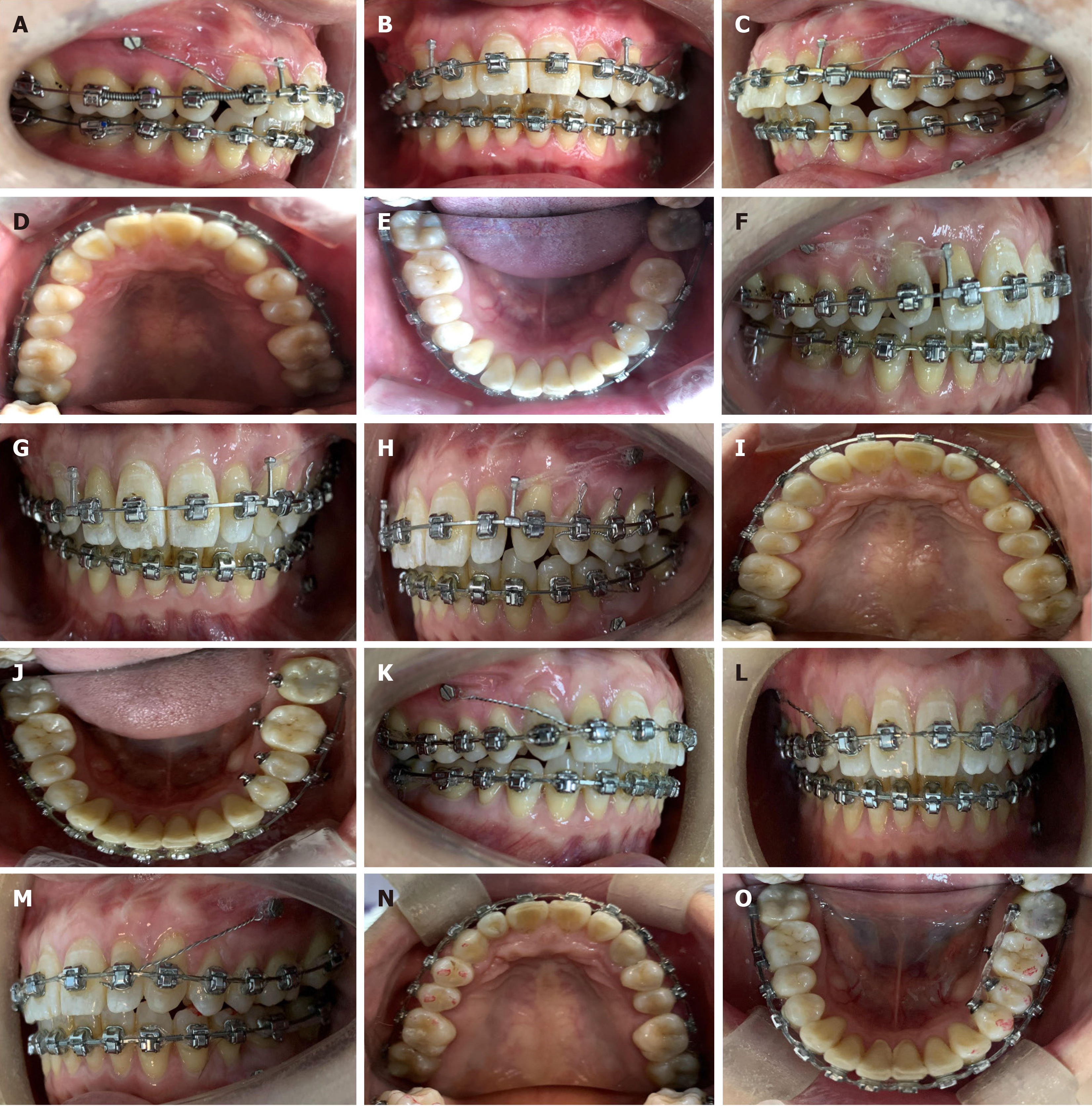Copyright
©The Author(s) 2024.
World J Orthop. Oct 18, 2024; 15(10): 965-972
Published online Oct 18, 2024. doi: 10.5312/wjo.v15.i10.965
Published online Oct 18, 2024. doi: 10.5312/wjo.v15.i10.965
Figure 2 Photographs during the treatment process.
A: The scissors bite of the posterior teeth was released. On the 0018 × 0.025 stainless steel edgewise, springs were implanted in the mesial region of the maxillary first permanent molar and the mesial region of the maxillary first premolar, and long traction hooks were placed in the mesial region of the maxillary canine so that the force could be transmitted via traction with the microimplant nails; B: Frontal view of distal movement of maxillary dentition; C: The left lateral view of distal movement of maxillary dentition; D: The palatal view of distal movement of maxillary dentition; E: The lingual view of distal movement of maxillary dentition; F: The occlusal relationship between molars has reached Class I, and the interdental spaces obtained via distal movement of the maxillary dentition appeared in the mesial region of the canine, which was closed by bilateral sliding. The left lower third molar was upright and moved mesially; G: Frontal view of distal movement of maxillary dentition; H: The left lateral view of distal movement of maxillary dentition; I: The palatal view of distal movement of maxillary dentition; J: The lingual view of distal movement of maxillary dentition; K: The interdental spaces of the maxillary dentition were closed; L: Frontal view; M: The left lateral view; N: The palatal view; O: Moving the mandibular third molar forward to replace the second molar.
- Citation: Xie LL, Chu DY, Wu XF. Simple and effective method for treating severe adult skeletal class II malocclusion: A case report. World J Orthop 2024; 15(10): 965-972
- URL: https://www.wjgnet.com/2218-5836/full/v15/i10/965.htm
- DOI: https://dx.doi.org/10.5312/wjo.v15.i10.965









